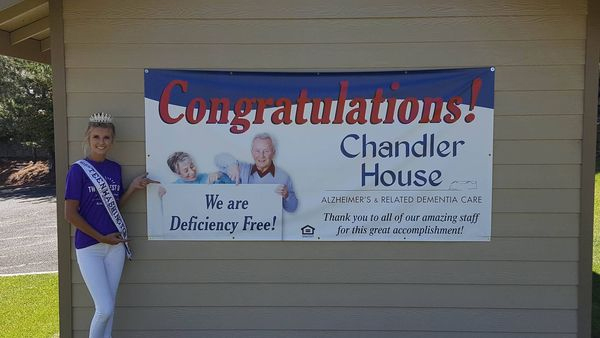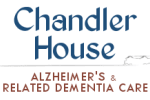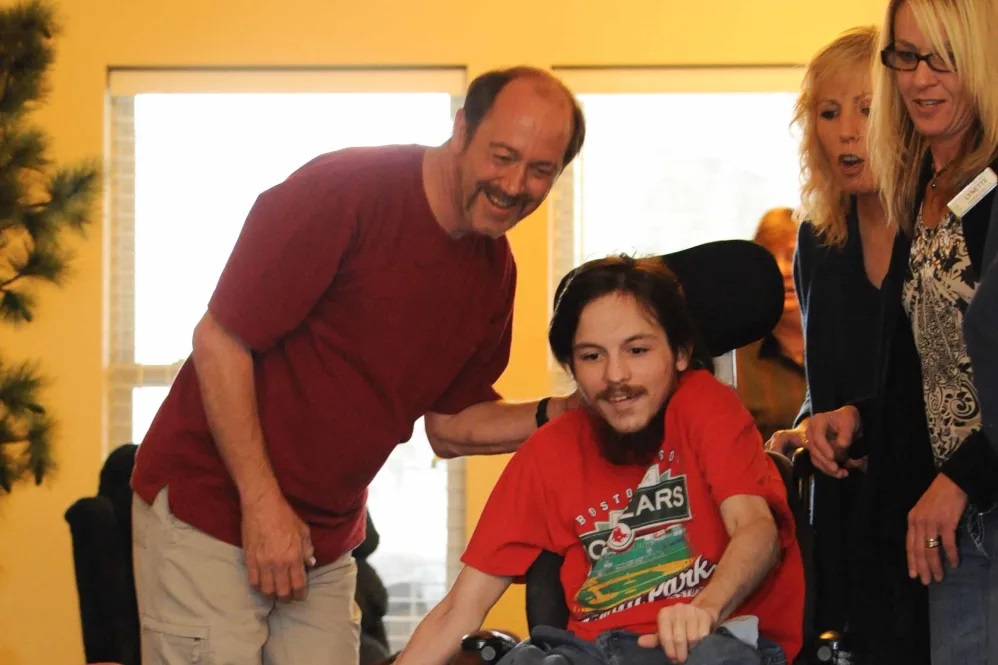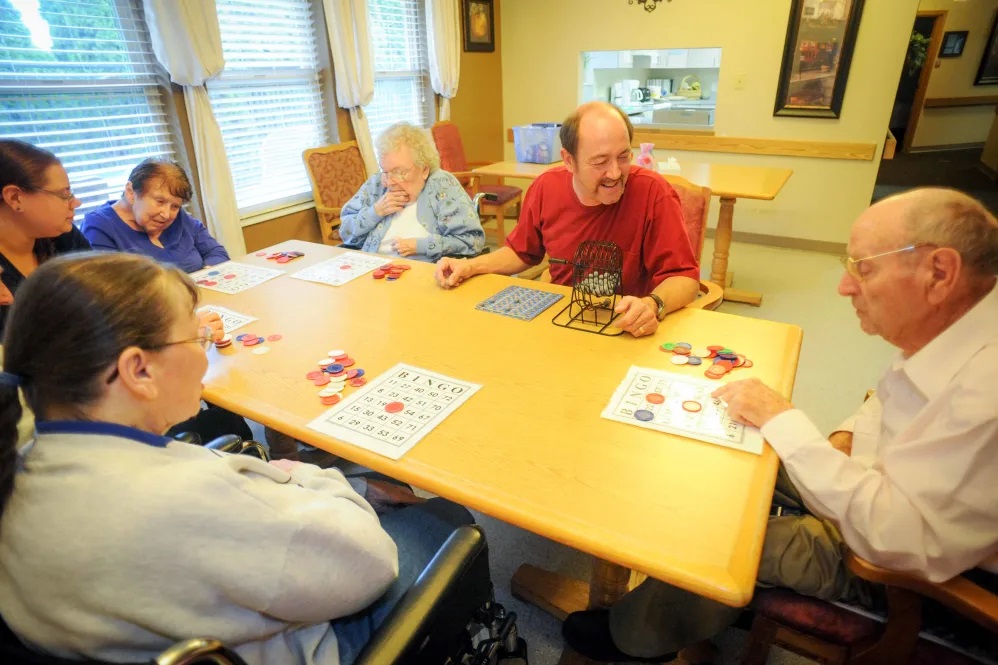Chandler House Senior Living Yakima, WA
Live, Laugh, Explore – Welcome to Chandler House
“Discover a world where every day brings new joy and adventure at Chandler House. Here, you’re not just finding a place to live but a vibrant community where laughter fills the air and exploration awaits around every corner. Join us in celebrating a carefree, fulfilling lifestyle. Welcome to Chandler House– where life is not just lived, it’s cherished.”
Call Today 509 793 7832
to schedule your private tour.

Safety, Security, Priority One
Secure and Serene: Your Safety is Our Priority. Your safety and security are paramount. Thanks to our comprehensive security measures and attentive staff, we've created a sanctuary where peace of mind reigns. In addition to physical safety, we prioritize emotional security, fostering a sense of trust and belonging. Our emergency response systems and well-trained personnel are always ready, ensuring that help is at hand whenever needed. At Peters Creek, we don't just offer a place to live; we provide a secure haven where you can relax and enjoy life to the fullest.
Exceptional Dining Experiences Celebrating Good Health and Great Flavors
Dining is an experience to savor. Our culinary team takes pride in crafting diverse, gourmet menus that cater to every taste and dietary requirement. Residents gather in our elegant dining hall, enjoying chef-prepared meals that are both nutritious and delicious, turning each meal into a social event. From farm-to-table freshness to global cuisine nights, dining at Peters Creek is about more than just food; it's about community, flavor, and the joy of shared experiences. Every meal is an opportunity to indulge in good food and great company, making dining a highlight of daily life.
Embrace Wellness: A Journey of Health and Harmony
At Peters Creek, wellness is a way of life. Our holistic approach encompasses everything from energizing fitness classes to nourishing meals and mental health workshops. Tailored to each resident's needs, our wellness program promotes a balanced, healthy lifestyle supported by attentive staff. Here, wellness means vibrant living in a community that cares deeply about your well-being.
Join the Fun: Exciting Social and Recreational Activities Await
At the heart of our community are the vibrant social and recreational activities designed to inspire joy, foster connections, and enrich daily life. From lively group outings and creative workshops to engaging social clubs and festive community events, something exciting always happens. Our diverse calendar caters to a wide range of interests, ensuring that everyone can find something they love. These activities are not just about having fun; they're about building lasting friendships, exploring new interests, and maintaining an active, fulfilling lifestyle. Join us and immerse yourself in an environment where every day offers a new opportunity for adventure and camaraderie.
Discover Luxury and Comfort
Welcome to a retirement community where excitement meets comfort! Kickstart your day with enjoyable exercise classes, followed by delightful gourmet meals prepared by our expert chefs. Our calendar is bustling with engaging social and recreational activities, perfect for making new friends and trying new hobbies. Need to step out? Our handy transportation services have you covered for shopping, appointments, or entertainment trips. It's more than a community – it's a lively, joyous experience in your golden years!
Living Options
Chandler House Alzheimer’s and Related Dementia Care, located just off 40th Avenue near the Yakima River in Yakima, WA, provides superb care for residents who face the daily challenges of Alzheimer’s and dementia. For over fifteen years, Chandler House Alzheimer’s and Related Dementia Care has developed a reputation of excellence for providing our residents with the highest level of care and a loving home. Our trained professional staff is qualified to meet the needs of each individual.
Contact Us
We're thrilled to welcome you!
Please fill in the form, or call us at
509-739-7832 to learn more.
Looking to join our team? Explore all career opportunities.
CHANDLER HOUSE ALZHEIMER'S & DEMENTIA CARE
Chandler House Alzheimer’s and Related Dementia Care, located just off 40th Avenue near the Yakima River in Yakima, WA, provides superb care for residents who face the daily challenges of Alzheimer’s and dementia. For over fifteen years, Chandler House Alzheimer’s and Related Dementia Care has developed a reputation of excellence for providing our residents with the highest level of care and a loving home. Our trained professional staff is qualified to meet the needs of each individual.
Please visit our community and see firsthand our dedication to providing the best possible home for our residents. Also, read more using the menu items above to find out more about the good things we are doing. Chandler House Alzheimer’s and Related Dementia Care has always been a family owned facility devoted to meeting the needs of the families who choose to make Chandler House Alzheimer’s and Related Dementia Care home.
SENIOR ASSISTED LIVING AT CHANDLER HOUSE
When it was established, Chandler House Alzheimer’s and Related Dementia Care provided a real new direction in Yakima for the care of residents with dementia and Alzheimer’s. First and foremost, it was a facility solely dedicated to supporting residents and family members with this specific set of memory care needs. Secondly, it was designed to look and feel very much like a home. The importance of reassuring sounds, scents and activities is elevated in the care of persons with memory loss.
All meals are home cooked and enjoyed in a more traditional, interactive family style setting, which stimulates connections and appetites. Rooms are decorated to be as home-like as possible. Chandler House Alzheimer’s and Related Dementia Care has a full time Life Enrichment Coordinator who works to provide each resident with activities that reflect those that they enjoyed throughout their life – music, planting, movies, games, etc.
What is the average cost of assisted living in the area?
The average cost of assisted living in any given area can vary greatly depending on a variety of factors, such as the size and location of the community, the type of services offered, and the level of care provided. Generally speaking, the average cost of assisted living in the United States is around $3,500 per month. However, this figure can vary significantly depending on the region and the type of services offered.
What is the average length of stay for residents?
The average length of stay for residents can vary greatly depending on the type of residence, the services provided, and the individual needs of the resident. In general, the average length of stay for a residential care facility is between four to six years. For assisted living facilities, the average length of stay is about five years. Assisted living facilities provide a range of services and support to help residents with activities of daily living, such as bathing, dressing, and eating.
What are the different types of assisted living?
Assisted living is a type of long-term care that provides support and services to individuals who need help with activities of daily living. It is designed to provide a safe and secure environment for those who need help with basic activities such as bathing, dressing, and eating. Assisted living is a great option for those who want to maintain their independence while still receiving the care they need. The different types of assisted living vary depending on the needs of the individual.
What is the cost of assisted living?
The cost of assisted living varies greatly depending on the services and amenities offered, the geographic location, and the type of residence. Generally speaking, the cost of assisted living can range from $3,000 to $6,000 per month. The cost of assisted living typically includes a base cost for rent, utilities, meals, housekeeping, transportation, and personal care services. Depending on the residence, additional costs may include the cost of activities, medication management, and other services. These costs can range from $500 to $5,000 per month, depending on level of care.
What are the benefits of assisted living?
Assisted living is a type of housing and care arrangement that provides assistance with daily activities such as bathing, dressing, grooming, and eating. The goal of assisted living is to help people maintain their independence and quality of life while receiving the necessary care and support they need. The benefits of assisted living are numerous. Here are some of the most common:
- Safety and Security: Assisted living facilities provide a safe and secure environment for seniors.
- Community and Activity: One of the most impactful ways to improve health is to prevent isolation and stay active with others.
- Diet and Nutrition: one of the most common challenges for seniors is to prepare their own healthy, fresh meals on a daily basis.
- Medication Administration: as the number of prescription medications and vitamin supplements increases with age, it is vital to have trained professionals to help manage medications and supplements.
More Questions on Elder Care at Chandler House
The drawbacks of assisted living can be numerous and varied depending on the individual's needs and the community they choose.
Firstly, cost can be a major factor. Assisted living facilities can be quite expensive, especially for those who require more intensive care. Depending on the level of care needed, the cost can range from a few hundred dollars a month to several thousand dollars a month.
Additionally, some facilities may require a large upfront deposit or other fees. However, weighed against the cost of living alone and receiving one-on-one assistance, the cost of assisted living is generally dramatically lower.
Assisted living facilities provide a variety of care services to help seniors live as independently as possible. The types of care available in assisted living facilities vary from community to community, but typically include the following:
- Personal care services are designed to help seniors with activities of daily living (ADLs) such as bathing, dressing, and toileting. Personal care services are typically provided by certified nursing assistants (CNAs) or home health aides (HHAs).
- Engaging Activities: exercise, games and events are just a small part of the full calendar of activities provided by assisted living facilities.
- Medication Management: assisted living facilities use advanced software and highly trained professionals to ensure medications are secured and distributed accurately.
- Meal Preparation: complex dietary needs can be met by dining services staff trained specifically for the needs of seniors.
Assisted living is a type of long-term care that provides support and services to individuals who need help with activities of daily living. It is designed to provide a safe and secure environment for those who need help with basic activities such as bathing, dressing, and eating. Assisted living is a great option for those who want to maintain their independence while still receiving the care they need. The different types of assisted living vary depending on the needs of the individual.
Assisted living is a type of housing and care arrangement that provides assistance with daily activities such as bathing, dressing, grooming, and eating. The goal of assisted living is to help people maintain their independence and quality of life while receiving the necessary care and support they need. The benefits of assisted living are numerous. Here are some of the most common:
- Safety and Security: Assisted living facilities provide a safe and secure environment for seniors.
- Community and Activity: One of the most impactful ways to improve health is to prevent isolation and stay active with others.
- Diet and Nutrition: one of the most common challenges for seniors is to prepare their own healthy, fresh meals on a daily basis.
- Medication Administration: as the number of prescription medications and vitamin supplements increases with age, it is vital to have trained professionals to help manage medications and supplements.
The decision of when someone needs assisted living is a complex one, and it ultimately depends on the individual and their specific situation. Generally speaking, it is the individual’s family and/or care team that makes the decision to pursue assisted living. This decision is often based on a combination of factors, including the individual’s health, their level of independence, and their ability to manage daily activities.
Assisted living facilities provide a variety of services and benefits to those who reside in them. These benefits can range from assistance with activities of daily living to providing a safe and secure environment. The primary beneficiaries of assisted living are seniors who are no longer able to live independently. These individuals may need help with activities of daily living such as bathing, dressing, and eating.
Assisted living facilities are residential communities that provide housing and care services to individuals who need assistance with activities of daily living. These facilities provide a variety of services, including meals, transportation, housekeeping, and personal care. Residents typically live in their own apartments or rooms, and may be able to access additional services such as physical therapy, occupational therapy, and recreation. The people who live in assisted living facilities are typically seniors who are no longer able or no longer choose to live independently.



